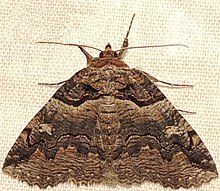
Anthony Florian Zaleski, known professionally as Tony Zale, was an American boxer. Zale was born and raised in Gary, Indiana, a steel town, which gave him his nickname, "Man of Steel". In addition, he had the reputation of being able to take fearsome punishment and still rally to win, reinforcing that nickname. Zale, who held the world middleweight title multiple times, was known as a crafty boxer and strong body puncher who punished his opponents and steadily wore them down before knocking them out. In 1990, Zale was awarded the Presidential Citizens Medal by President George. H. W. Bush.

The Zale Corporation is an American jewelry retailer, incorporated in Delaware in 1993. The principal executive offices are located in Coppell, Texas.

The Bežigrad District, or simply Bežigrad, is a district of the City Municipality of Ljubljana. It encompasses the northern part of Ljubljana, the capital of Slovenia, between the southern rail line to the south, the Upper Carniola rail line to the west, the highway loop to the north, and Šmartno Street and Žale Cemetery to the east. It extends on both sides of Vienna Street, which is its central axis and main traffic artery. In the narrow sense, it includes the neighborhoods of Bežigrad, Brinje, Nove Stožice, and Sava Development. In the broader sense, Bežigrad is sometimes considered to include the northern Ljubljana suburbs of Stožice, Ježica, and the Črnuče District.

Gorzkie żale (Polish pronunciation: [ˈɡɔʂkʲe ˈʐalɛ] Lenten is a Catholic devotion containing many hymns that developed out of Poland in the 18th century. The devotion is primarily a sung reflection and meditation on the Passion of Christ and the sorrows of His Blessed Mother. The devotion consists of a three-part cycle, subdivided into five unique parts. One part of the cycle is held on each Sunday in the period of Lent, including Palm Sunday, and the entire ceremony is held on Good Friday. The devotion originated in Holy Cross Church in Warsaw and from there it spread to whole of Poland.

Žale Central Cemetery, often simply Žale, is the largest and the central cemetery in Ljubljana and Slovenia. It is located in the Bežigrad District and operated by the Žale Public Company.

Żale is a village in the administrative district of Gmina Grodzisk, within Siemiatycze County, Podlaskie Voivodeship, in north-eastern Poland. It lies approximately 7 kilometres (4 mi) west of Grodzisk, 22 km (14 mi) north-west of Siemiatycze, and 71 km (44 mi) south-west of the regional capital Białystok.
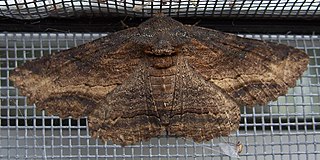
Zale lunata, the lunate zale, is a moth of the family Erebidae. The species was first described by Dru Drury in 1773. It is found throughout the east and west of North America. The wingspan is 40–55 mm. The moth flies from year round depending on the location. The larvae feed on various deciduous trees, such as maple, willow and Prunus.

Zale is a genus of moths in the family Erebidae erected by Jacob Hübner in 1818.

Hypomecis lunifera is a moth of the family Geometridae. It is found in eastern Asia, including Japan, the Kuriles and the Korean Peninsula.
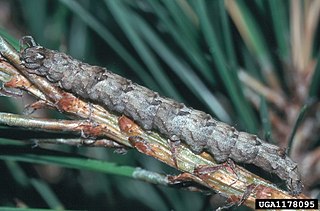
Zale metatoides, the washed-out zale or jack pine false looper, is a moth of the family Noctuidae. The species was first described by James Halliday McDunnough in 1943. It is found in barrens and pine woodlands from at least Wisconsin and probably Manitoba to Maine, south to the mountains of Georgia. The range in the Gulf States is not certain.
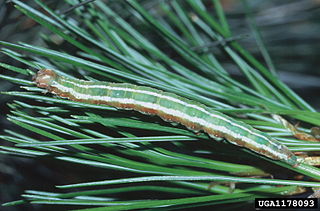
Zale helata, the brown-spotted zale, is a moth of the family Noctuidae. The species was first described by James Halliday McDunnough in 1943. It is found in barrens and pine woodlands from Manitoba to Maine, south to northern Alabama and Texas.
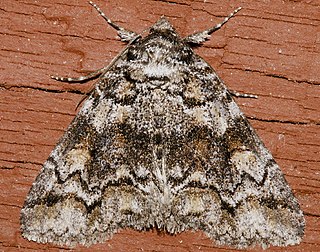
Zale duplicata, the pine false looper zale, pine false looper, banded similar-wing or grey similar-wing, is a moth of the family Noctuidae. The species was first described by Charles J. S. Bethune in 1865. It is found in woodlands and forests from British Columbia to Nova Scotia, south to the mountains of Georgia and Texas.
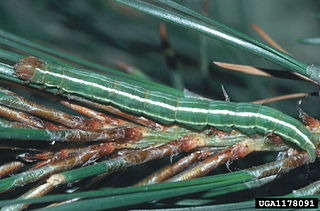
Zale curema, the black-eyed zale or northeastern pine zale, is a moth of the family Noctuidae. The species was first described by John Bernhard Smith in 1908. It is found from New York to Maine, south to western North Carolina, west to the Gulf States and Texas. The species is listed as endangered in Connecticut.
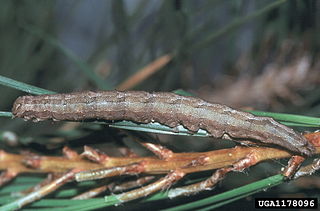
Zale obliqua, the oblique zale, is a moth of the family Noctuidae. The species was first described by Achille Guenée in 1852. It is found in barrens and pine woodlands of the United States from Ohio to southern Maine, south to northern Florida, Mississippi and Texas.
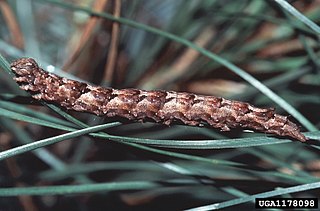
Zale submediana, the gray spring zale, is a moth of the family Noctuidae. The species was first described by Embrik Strand in 1917. It is found in the US from Wisconsin to Maine, south to New Jersey and in mountains to North Carolina.
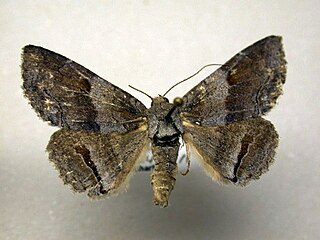
Zale squamularis, the gray-banded zale, is a moth of the family Noctuidae. The species was first described by Dru Drury in 1773. It is found in the US from Ohio to Long Island, south to Florida and Texas.

Zale lunifera, the bold-based zale or pine barrens zale, is a moth of the family Noctuidae. The species was first described by Jacob Hübner in 1818. It occurs primarily east and south of the Appalachian Mountains, from southern Maine south to Lee County, Mississippi, Mississippi and Florida. It is not known from south-eastern Virginia or South Carolina, but the species may occur in these regions. Lack of suitable habitat in Maryland and Delaware makes occurrence in these states unlikely. It also occurs inland to the mountains of Virginia and Lebanon County, Pennsylvania. In south-eastern Georgia it inhabits open, sandy pine-oak forest.

The Erebidae are a family of moths in the superfamily Noctuoidea. The family is among the largest families of moths by species count and contains a wide variety of well-known macromoth groups. The family includes the underwings (Catocala); litter moths (Herminiinae); tiger, lichen, and wasp moths (Arctiinae); tussock moths (Lymantriinae), including the arctic woolly bear moth ; piercing moths ; micronoctuoid moths (Micronoctuini); snout moths (Hypeninae); and zales, though many of these common names can also refer to moths outside the Erebidae. Some of the erebid moths are called owlets.
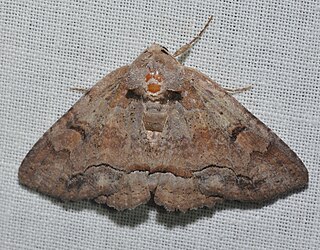
Zale confusa, the confused zale moth, is an owlet moth in the family Erebidae. The species was first described by James Halliday McDunnough in 1940. It is found in North America.
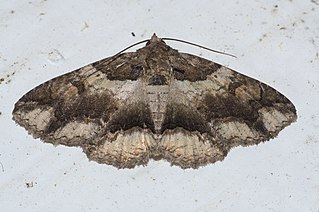
Zale galbanata, the maple zale, is a species of moth in the family Erebidae. It is found in North America.

